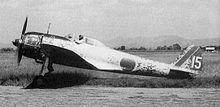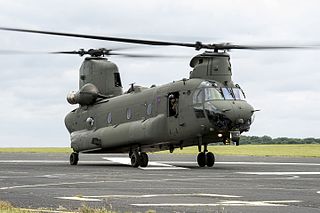
Royal Air Force Odiham or more simply RAF Odiham is a Royal Air Force station situated a little to the south of the village of Odiham in Hampshire, England. It is the home of the Royal Air Force's heavy lift helicopter, the Boeing Chinook, and of the King's Helicopter Flight (TKHF). Its current station commander is Group Captain Donal McGurk.
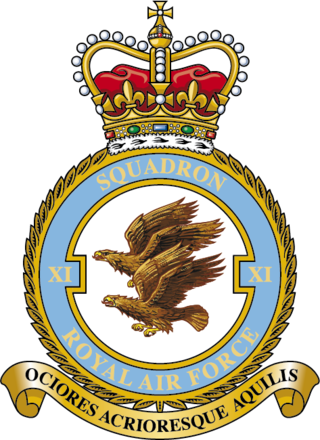
No. 11 or XI Squadron, is "the world's oldest, dedicated fighter unit" and continues the traditions established by the similarly numbered Royal Flying Corps squadron, established in 1915. After a history of equipment with numerous different aircraft types, the squadron most recently operated the Tornado F3 until 2005 when it was disbanded. It was reactivated in 2006 to operate the Typhoon F2, receiving its first aircraft on 9 October 2006.

Royal Air Force Shawbury, otherwise known as RAF Shawbury, is a Royal Air Force station near the village of Shawbury in Shropshire in the West Midlands of England.
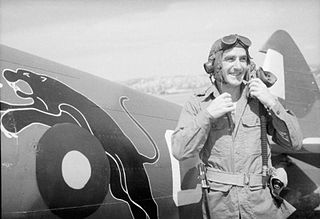
No. 152 (Hyderabad) Squadron RAF was an aircraft squadron of the Royal Air Force during both World War I and World War II.

No. 27 Squadron of the Royal Air Force operates the Boeing Chinook from RAF Odiham.
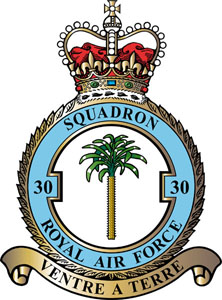
Number 30 Squadron of the Royal Air Force operates the Airbus A400M Atlas transport aircraft and is based at RAF Brize Norton, Oxfordshire.

No. 84 Squadron of the Royal Air Force is at present a Search and Rescue Squadron based at RAF Akrotiri, using the Westland/Airbus Helicopters Puma HC Mk.2 helicopter. The squadron transitioned from the previously operated Bell Griffin HAR.2 to the Puma HC.2 in 2023.

No. 34 Squadron RAF was a squadron of the Royal Air Force. During the First World War it operated as a reconnaissance and bomber squadron and in the 1930s operated light bombers. It was re-equipped with fighter-bombers in the later half of the Second World War and in the post-war period was reformed four times; first as a photo-reconnaissance unit, then anti-aircraft co-operation, then as a jet fighter squadron through the 1950s. It was last active in the 1960s, as a Blackburn Beverley transport squadron.
No. 90 Squadron RAF is a squadron of the Royal Air Force.

The Defence Helicopter Flying School (DHFS) was a military flying school based at RAF Shawbury in Shropshire, England. The school, established in 1997, was a tri-service organisation and trained helicopter aircrews for all three British armed forces. It initially used the Eurocopter Squirrel HT1 and Bell Griffin HT1 helicopters, which were retained despite the introduction of the Airbus Juno HT1 and Airbus Jupiter HT1.

No. 211 Squadron RAF was a squadron in the Royal Air Force active from 1917 to 1919 and from 1937 to 1946. In World War I it operated as a bomber and later a reconnaissance unit on the Western Front. In World War II it operated as a medium bomber unit in the Middle East and Far East and later as a strike fighter unit in the Far East, equipped with, successively, the Bristol Blenheim, the Bristol Beaufighter and de Havilland Mosquito.

Army Aviation Centre (AAC) Middle Wallop is a British Army airfield located near the Hampshire village of Middle Wallop, used for Army Air Corps training. The base hosts 2 (Training) Regiment AAC and 7 (Training) Regiment AAC under the umbrella of the Army Aviation Centre. 2 (Training) Regiment performs ground training; 7 (Training) Regiment trains aircrew on AAC aircraft after they complete basic training at RAF Shawbury.
No. 113 Squadron began service in 1917 with the Egyptian Expeditionary Force commanded by General Edmund Allenby. Initially, the squadron was a unit of the Royal Flying Corps, serving during the Sinai and Palestine Campaign and as a reconnaissance, army cooperation, bomber, fighter, transport and missile operation squadron during its existence.
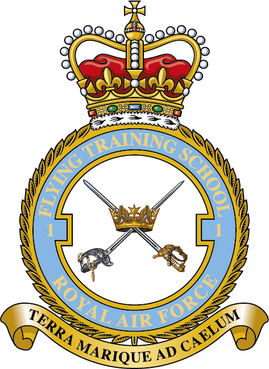
The No. 1 Flying Training School is the oldest military pilot training school in the world, currently used to deliver rotary training to aircrew of the British armed forces.

No. 64 Squadron was a squadron of the Royal Air Force. It was first formed on 1 August 1916 as a squadron of the Royal Flying Corps. It was disbanded on 31 January 1991 at RAF Leuchars.
No. 62 Squadron of the Royal Air Force was originally established as a Royal Flying Corps squadron in 1916 and operated the Bristol F2B fighter in France during the last year of the First World War. After the war the squadron was disbanded and it was re-established in 1937 as part of the buildup of the RAF in the late 1930s. During the Second World War the Squadron was deployed to the Far East, operating the Bristol Blenheim from Singapore and Malaya. In 1942 No. 62 Squadron was re-equipped with the Lockheed Hudson and it moved to Sumatra, then Burma and then India. After the close of World War II the squadron disbanded for the second time. It was briefly re-established from 1946 to 1947 as a Dakota squadron and operated out of Burma and India. It final incarnation was as a Bristol Bloodhound missile unit in the early 1960s.
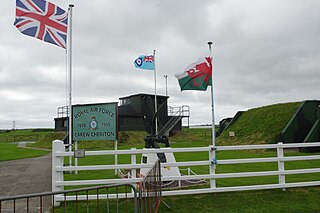
Royal Air Force Carew Cheriton, or more simply RAF Carew Cheriton, is a former Royal Air Force station located near Carew, Pembrokeshire. It was situated 4.7 miles (7.6 km) north west of Tenby.
No. 82 Squadron RAF was a Royal Air Force squadron that was first formed in 1917 and last disbanded in 1963. It served at times as a bomber unit, a reconnaissance unit and lastly as an Intermediate Range Ballistic Missile (IRBM) unit.
No. 139 (Jamaica) Squadron RAF was a Royal Air Force Squadron that was fighter unit in World War I and a bomber unit from World War II until the 1960s.
No. 135 Squadron RAF was a Royal Air Force Squadron formed to be a bomber unit in the First World War and reformed as a fighter unit in Second World War.





